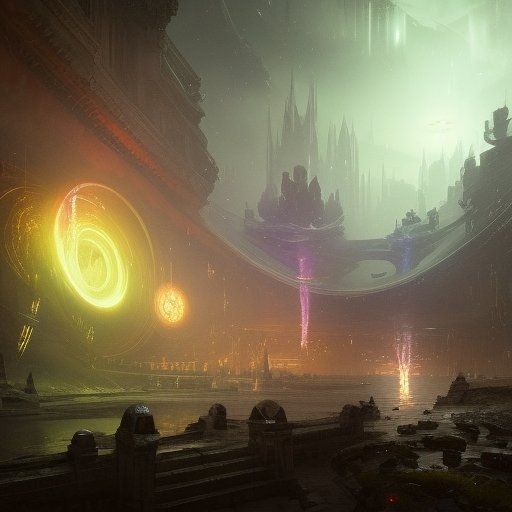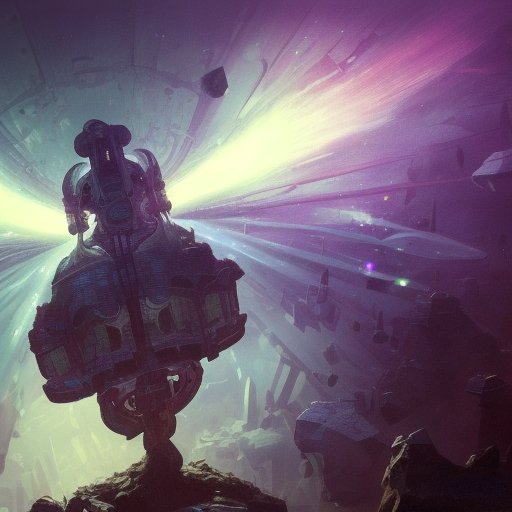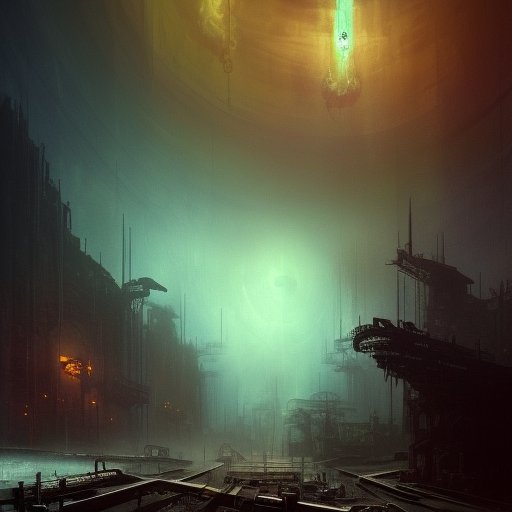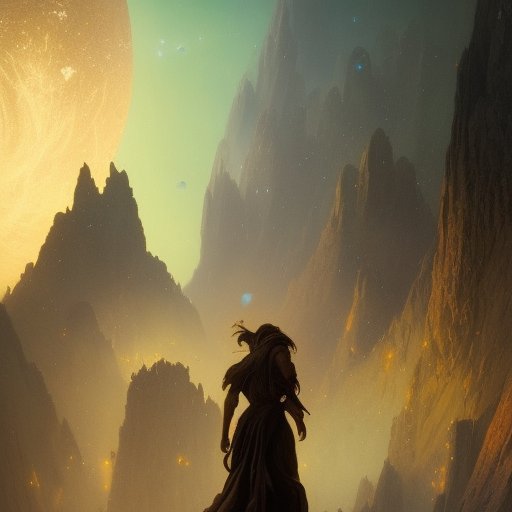
Are you ready to dive into the extraordinary world of wormholes? Exploring the weirdest corners of physics and fiction, this article delves into the incredible phenomenon of wormholes. What are they, what do they do, and could they actually be real? We’ll take a look at the science behind these enigmatic tunnels, as well as their depictions in popular culture, from literature to gaming. With the potential to create shortcuts between universes, could wormholes be the key to future exploration and discovery? We’ll weigh the pros and cons of venturing down the cosmic rabbit hole, and the implications it could have for the future of humanity. Buckle up, and let’s explore the possibilities of the infinite cosmos.
I. Introduction
Greetings and salutations, fellow travelers of the cosmos! Today, we embark on a journey to explore the mind-bending phenomenon of wormholes. These mysterious tunnels through space and time have captured the imagination of scientists and science fiction writers alike for decades, with their potential to create shortcuts between universes and bring us closer to the secrets of the cosmos.

Simply put, a wormhole is a theoretical passage in the fabric of space-time that could connect two different points in the universe. These “shortcuts” could potentially allow us to travel vast distances in the blink of an eye, making space travel as we know it today seem like child’s play. But the possibilities of wormholes go beyond simple transportation. They could lead to entirely new worlds, alternate realities, and even contact with other dimensions.
Of course, the concept of wormholes is not without its challenges. Wormholes would require an extraordinary amount of energy to open up and keep stable, and there are questions of safety, sustainability, and the effects of space-time on human biology to consider. But with every new breakthrough in physics, we come one step closer to unlocking the secrets of these amazing tunnels.
Our journey today will take us through the ways in which wormholes work, how they’ve been depicted in the novels of cosmic figures, their representation in art and popular culture, and the implications they may have for humanity and the future of space travel. So buckle up, space adventurers, and let’s set our sights on the vast and infinite possibilities that await us through the gateway of the wormhole.
II. Wormhole Physics
If you’re anything like me, you’ve probably got a few questions about the science behind wormholes. How do these incredible tunnels actually work? What makes them possible, and what are their limitations? Well, hold on tight, because we’re about to dive headfirst (or perhaps, through the wormhole) into the amazing physics that make wormholes tick.

First things first: wormholes would require the existence of a hypothetical substance called exotic matter. This substance, with its negative energy density, is what allows for the bending of space-time that creates the tunnel of the wormhole. But how, exactly, does this process work?
Imagine that you’re holding a piece of paper, and you want to travel from one side of it to the other. Normally, you’d have to travel across the entire piece of paper to get to your destination. But what if you could fold the piece of paper in half so that the two points are now touching? Suddenly, you’ve created a shortcut that bypasses the entire length of the paper. That’s essentially how a wormhole works.
But as we mentioned earlier, there are a number of challenges to creating and maintaining a stable wormhole. For one thing, the energy required would be astronomical, and we haven’t yet figured out how to create or harness a negative energy density. Additionally, any matter passing through the wormhole would interact with the exotic matter in ways that we don’t yet understand, potentially leading to all sorts of hazards.
Despite these challenges, the potential rewards of unlocking the secrets of wormholes are nothing short of astounding. From faster-than-light travel to access to parallel universes, the benefits of wormholes are limited only by our imaginations. As we continue to study the physics behind these fascinating tunnels, we may one day unlock the key to traversing the infinite cosmos.
III. The Novels of Cosmic Figures
What’s science fiction without a little bit of fun, eh? Let’s dive into the role of wormholes in popular literature and media, shall we? From the incredible mind of Frank Herbert to the gripping pages of Orson Scott Card’s Ender’s Game, wormholes have played an essential role in the science fiction genre for decades.
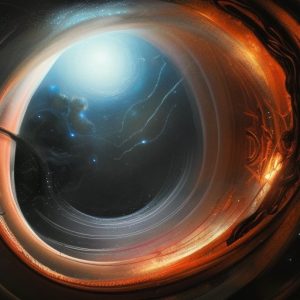
In Herbert’s Dune series, the Spice Melange powers the creation of wormholes, allowing for faster-than-light travel across the galaxy. Similarly, in Card’s Enderverse, the Formics use their advanced technology to create a “Jump” which allows for travel between star systems. And who could forget Vernor Vinge’s A Fire Upon the Deep, in which the discovery of an ancient technology leads to a race across the galaxy through a network of wormholes?
But it’s not just in literature where wormholes take center stage. In video games, such as the Mass Effect and Halo series, wormholes are used as a means of interstellar travel. And in television and film, wormholes have been depicted in such diverse properties as Star Trek, Doctor Who, and Stargate.
The depiction of wormholes in science fiction has the power to inspire and excite us about the prospect of exploring the unknown. But while the exploration of the cosmos is certainly something to be celebrated, it’s important to remember that science fiction is just that – fiction. With every new discovery in wormhole physics, we come closer to realizing the potential of these tunnels, but we must also be cautious of the effects of space-time on human life, and consider the ethical and practical implications of such expeditions. So go forth and explore, dear readers, but always keep one foot in reality.
IV. Phenomenal Drawing
Wormholes may be a theoretical concept, but they’ve captured the hearts and minds of artists and creators across the universe. From mind-bending paintings to heart-stopping music videos, wormholes have been showcased in every type of medium imaginable.

In the realm of literature, wormholes have long been an essential part of science fiction, particularly in the works of authors like Isaac Asimov and Frank Herbert. These incredible tunnels have been depicted as gateways to other worlds, alternate realities, and even time travel. Wormholes have helped shape the genre of science fiction into what we know it as today.
But the fascination with wormholes doesn’t stop there. In cinema, we’ve seen these incredible tunnels in films like “Interstellar” and the “Star Trek” franchise, where wormholes serve as the gateway to new worlds and new adventures beyond our wildest dreams. In video games, they’ve been used to create immersive and expansive universes where players can explore uncharted territory and make their way across the stars.
But it’s not just science fiction where wormholes have captured our imagination. In art, wormholes have been depicted as swirling, kaleidoscopic tunnels in the fabric of the cosmos, drawing viewers into a world of pure wonder and possibility. And in music, wormholes have been used as a metaphor for the cosmic journey of human existence, with artists from Pink Floyd to Muse using the concept to create incredible soundscapes that take us on a journey through the stars.
Whether it’s science fiction, art, or music, wormholes have captured our imaginations as a symbol of the infinite possibilities of the universe. They represent the potential for exploration, adventure, and discovery, inspiring us to reach for the stars and push the boundaries of what we know to be possible. Whether they’re a figment of the imagination or a real possibility, wormholes will always hold a special place in our hearts and minds as a symbol of the boundless potential of the cosmos.
V. Wormholes and the Future
So as we’ve said before, wormholes could revolutionize the way we explore space, but what implications does this have for humanity as a whole? Some theorists have hypothesized that the ability to traverse multiple universes could have profound impacts on human culture, economics, and even ethics.

Imagine if we were able to access alternate realities or other universes filled with untold resources and possibilities. The possibilities for technological advancements and new scientific discoveries would grow beyond our wildest dreams. But with these new developments, we would need to be careful not to upset the delicate balance of those worlds or disrupt the ecosystems that we encounter.
Wormholes could even open up new dimensions of human consciousness, allowing us to interact with other beings or dimensions beyond our current understanding. With this new knowledge could come great responsibility. It’s our duty as the creators and explorers of this universe to ensure that we use these advancements for the betterment of all beings, not just for our own gain.
Of course, there are also risks to consider. The dangers of traversing a wormhole are significant, and we would need to ensure that we have the technology and knowledge to make the journey safely. Additionally, the impact of encountering intelligent life forms could bring about social and political upheaval that we may not be prepared for.
But despite the risks, one thing is certain: wormholes, if they can be harnessed effectively, could unlock entirely new frontiers of exploration and discovery for humanity, inspiring future generations to push the limits of what is possible. So let us continue to dream big, my fellow adventurers, and keep our eyes on the stars, for the possibilities of wormholes are endless.
VI. Wormhole Pros and Cons
Now that we’ve explored the possibilities and complexities of wormhole travel, let’s take a closer look at the pros and cons of this amazing technology.

On the pro side, wormholes could revolutionize our understanding of the universe and allow us to explore new worlds and dimensions beyond our wildest imagination. They could potentially cure diseases, provide unlimited clean energy, and open up new avenues for scientific discovery. Wormholes could also bring us closer to extraterrestrial life, allowing us to make contact with alien species and learn from their wisdom and knowledge.
But, as with any new technology, there are risks and challenges to consider. The energy required to create and sustain a wormhole would be immense and potentially dangerous, and there is the possibility of collapse or instability that could cause cataclysmic damage. Furthermore, the effects of space-time on human biology are not well understood, and there may be unforeseen consequences to our health and wellbeing. Additionally, we must consider the ethical implications of accessing new worlds and the potential impact on existing ecosystems and cultures.
Ultimately, the decision to pursue wormhole travel must be made with great care and attention to these risks and rewards. We must weigh the benefits of new knowledge and discovery against potential dangers and unintended consequences. But, as explorers and adventurers, we are driven by our curiosity and our desire to push the boundaries of what is possible. And through the power of technology and the strength of our collective will, wormhole travel may one day become a reality, allowing us to explore the mysteries of the universe and uncover the secrets of the cosmos.
VII. Conclusion
And so, dear readers, our journey through the mind-bending world of wormholes comes to a close. We’ve explored the cutting-edge science behind these tunnels through space-time, marveled at their depictions in popular culture and art, and pondered the vast and infinite possibilities of traveling through multiple universes.

But in the end, the question remains: are wormholes a gateway to a bright new future of space exploration, or a dangerous path towards the unknown? The answer, as ever, is a complex one. Wormholes offer the tantalizing possibility of faster-than-light travel, undiscovered worlds, and contact with other dimensions. But they also come with a host of risks and challenges, from the vast amounts of energy required to open and maintain them, to the potential impact on human biology.
Nevertheless, the very concept of wormholes challenges us to think outside our current understanding of space and time. As we continue to push the limits of science and exploration, we may one day discover a way to safely harness the power of these extraordinary tunnels.
Until then, we can take solace in the fact that wormholes will continue to inspire and fascinate us, whether in the pages of our favorite science fiction novels, or in the cutting-edge research labs of the future. For as long as we continue to dream, imagine, and explore, the possibilities of the universe will remain endless. So go forth, intrepid readers, and let your mind’s eye soar through the infinite wonders of the cosmos.
